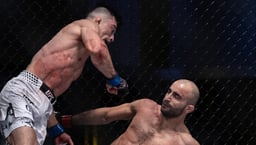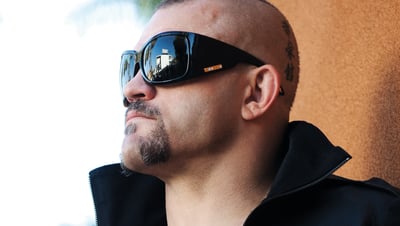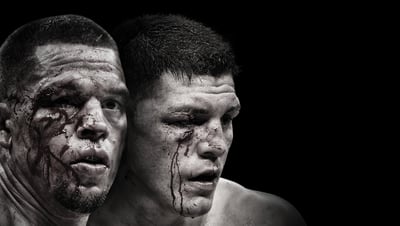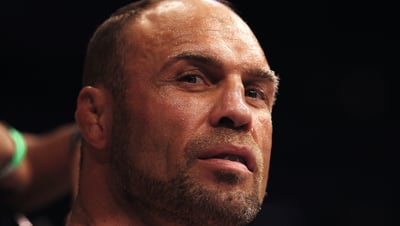
Issue 215
April 2025
Tim Wheaton dives into the growing gap between regulated combat and the fan hunger for anything-goes Vale Tudor anarchy.
There's a sense MMA might be edging closer to its rebellious teenage phase - moody, unpredictable, and desperate for attention. There’s never been more to choose from in the fight landscape, and the gloves are off. Literally. Bare-knuckle brawls. Five-on-five scrambles. Influencer scraps in shopping centers. Models with mitts. Headbutts in telephone booths. And while many roads seemingly lead to anything-goes gladiatorial entertainment, we’re increasingly traveling towards Vale Tudo. It’s a fight promotion that occupies the past and future in many ways. We could argue that if combat sports are heading anywhere, it’s a full circle to where it all started. Could we see a world without half-measures where we just let fighters fight and put their pearly whites on the line? Well, if you compare Tudo Vale to bare-knuckle boxing, the latter looks like a handshake in a gentleman’s club.
LEGACY OF CHAOS
Promotions like the International Vale Tudo Championship in the late 1990s epitomized this raw energy. IVC events were infamous for their hardcore nature. Fighters like Wanderlei Silva and José ‘Pelé’ Landi-Jons became icons, battling under conditions that allowed headbutts, groin strikes, and stomps. The IVC's 30-minute fights left participants bloodied and battered, but they also launched careers and created legends. The audience was bloodthirsty, and chaos was the norm.
‘The Smashing Machine’ Mark Kerr got his start in combat sports through a Vale Tudo tournament. He used his knees on the ground to win in his first bout of the night. In his next bout, the opponent tried to crawl out of the ring after losing two teeth. In the final match, Kerr entered the bout with a broken hand, but it didn't matter as he walked away victorious. Whatever ‘The Rock’ brings in Kerr's upcoming biopic will not live up to the ruthlessness of the reality.
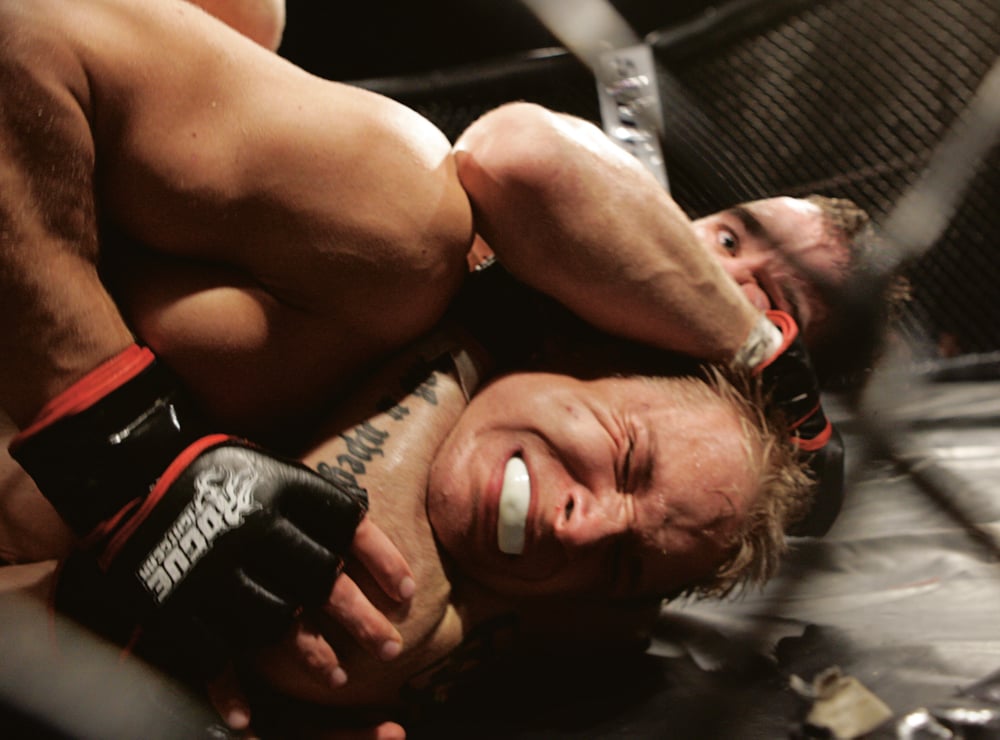
FAMOUS ALUMNI
Wanderlei Silva was a brawler who dominated Vale Tudo and only got into the sport so girls would like him. Using his bare hands, he would swing wide to tie up opponents and then slam with headbutts. If they went down, Silva would stomp them. He was a whirlwind who won his first four bouts in a combined eight minutes, all by knockout. In one match, he punched his opponent to the ground. Then his opponent slipped out of the ropes to try and get away from the onslaught, but, unsurprisingly, Silva followed and continued to throw strikes even as both combatants were out of the ring. Later on, Silva brought his clinch knees and stomps into PRIDE FC and became one of the biggest stars in the history of MMA. Early MMA was still figuring out exactly what it would be: a ring or cage. One Vale Tudo event tried to balance this by having netting from the bottom rope to the ring floor, a half measure. Future UFC champion Chuck Liddell used this to push his opponent into the net, trapping his prey, then landing ground and pound. At least fighters couldn't crawl away anymore. Is that more civil? Who knows.
CLASH OF TITANS
The night Wanderlei Silva and Chuck Liddell fought at the same International Vale Tudo Championship event remains one of the most fascinating moments in MMA history. The lack of gloves and minimal rules created an environment where fighters had to rely on sheer grit and adaptability to survive. It was brutal, it was chaos, it was bloodthirsty, and it was a pure fight.
Oddly, IVC events were not held in covert basements like you'd expect. We're all picturing Fight Club, but it was way weirder. These events were primarily held in hotel event centers. It's the same place you might attend a retirement party for a coworker you've never met. A wedding on Thursday. An investor meeting on Friday. Walderlei Silva is stomping some poor soul on Saturday. The overhead lighting and carpeting only add to the chaotic mantra, the anarchy, but we need to get out of here before 1 AM, or else they charge extra. As public scrutiny grew and regulations tightened, Vale Tudo faded into obscurity, replaced by the more polished MMA we know today. Modern iterations of Vale Tudo's spirit can be seen in backyard brawls and unsanctioned fights popularized on social media. These underground matches echo the rawness of early Vale Tudo but lack its organized structure. While today's MMA promotions prioritize safety and sportsmanship, fringe formats like bare-knuckle boxing and influencer-driven spectacles hint at a growing appetite for chaos.
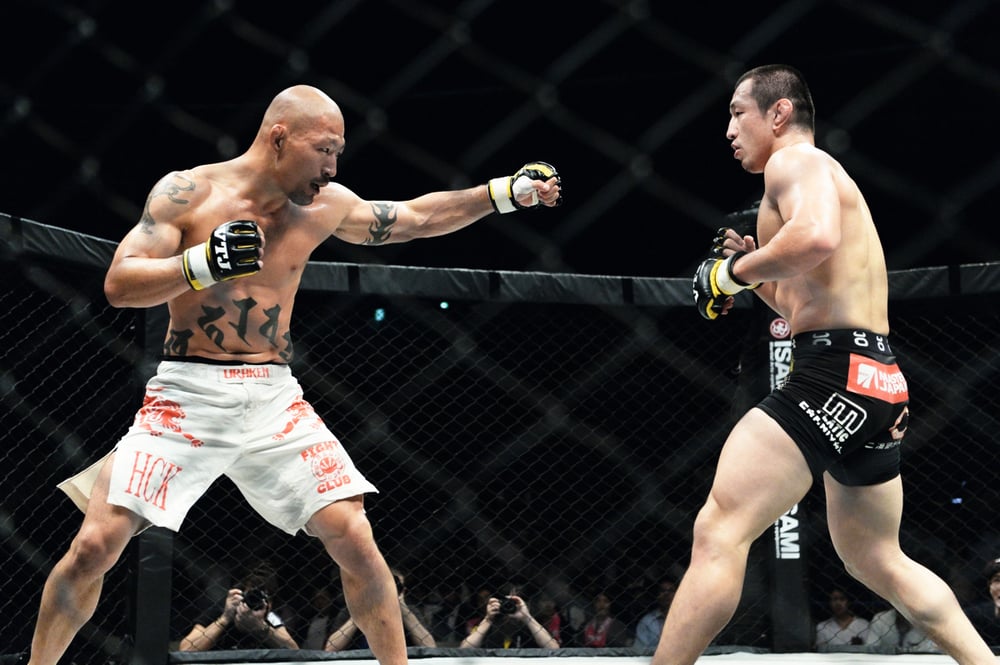
FRINGE FIGHTING
Bare-knuckle used to be something that happened after the last call outside the kebab shop. Now? It’s a legit global franchise welcoming an increasing number of stars. Thailand added her elbow sauce by resurrecting bare-knuckle Muay Thai. We’ve collectively seen so many head kicks, knockouts, and spinning elbows that the shock factor’s worn off. A study found that repeated exposure to violent media lowers empathy and boosts proviolence attitudes. In MMA, that translates to fans cheering injuries, replaying brutal KOs on a loop, and treating violence as routine. The more we see, the less we feel. Desensitization isn’t just a theory - it’s creeping into our fight culture. The edge has worn off. It’s no longer an extreme product. It’s just another product. These MMA offshoots can only exist as plucky and radical outsiders to the norm. Once it becomes the norm, the charm wears off. Thus, each one has to progress to be even more on the fringes.
RULES IN MMA
How many fights have we seen derailed because nobody can agree on what the word ‘grounded’ means? One hand down? Two? A pinky grazing the canvas under a blood moon? The knee-to-the-head-of-a-grounded-opponent rule can be tricky to interpret. Take current UFC Light Heavyweight champ Magomed Ankalaev. He kneed Johnny Walker mid-fight, and both men were ready to scrap on. But instead of a finish, we got a freeze-frame clinic. The bout was waved off. The crowd booed. Both fighters stared blankly as a great fight became legal drama. No one tunes in to hear Joe Rogan and Marc Ratner debate Chapter 7, Subsection 3 of the Unified Rules. And remember Weidman vs Mousasi? The world tuned in for a high-level middleweight banger and got a slow-motion slideshow instead. Was his hand down? Was it up? Did he levitate mid-strike? Eventually, Weidman lost by being too confused to continue. Not ideal. The rules are there to protect fighters and fans in some ways, but it’s tough not to overcomplicate the chaos.
CORPORATE
It's maybe the most famous face in MMA history, and you've seen it hundreds of times - the famous Just Bleed guy. He was a man who loved the chaos of early UFC events, so much so that he painted his body with UFC and Just Bleed. He was a MMA fanatic who was eventually arrested for stealing farm equipment. But he stopped watching the sport. According to him, it became too clean, too corporate. Over time, it just became another sport. Early UFC and Vale Tudo was a raw, unrestrained fight. It was as close as one could watch a fight in the Colosseum. It was mostly illegal wherever you went. So, it got cleaned up. But over time, it's become less heavy metal and more shareholder yacht rock. Some people want the sport, and some people want a battle. However, bare-knuckle fighting is a call back to this early raw fighting. It's a bloody conflict where grit matters more than athleticism. Backup teeth fall under job requirements. Maybe we'll keep the knuckles and just keep stripping rules away.
RULES OR NO RULES?
There’s no denying the thrill of raw dogging fights, but let’s not forget why rules matter. The UFC’s structure isn’t about watering things down or failing to entertain. It has created structures that ensure elite fighters can build careers, not just survive brawls. Rules extend longevity, reward strategy over savagery, and make MMA the highest global skill test. Sure, Vale Tudo has its nostalgic appeal, and yes, the appetite for extreme formats is constantly growing. But you need rules if you want greatness, legacy, and technical mastery. The UFC might be the polished version of a street fight, but that polish is what turns fighters into legends, not hospital bills and not a talent churn. The future might flirt with chaos, but the foundation still needs discipline. Let the wild ones rage, but don’t forget who built the arenas.


